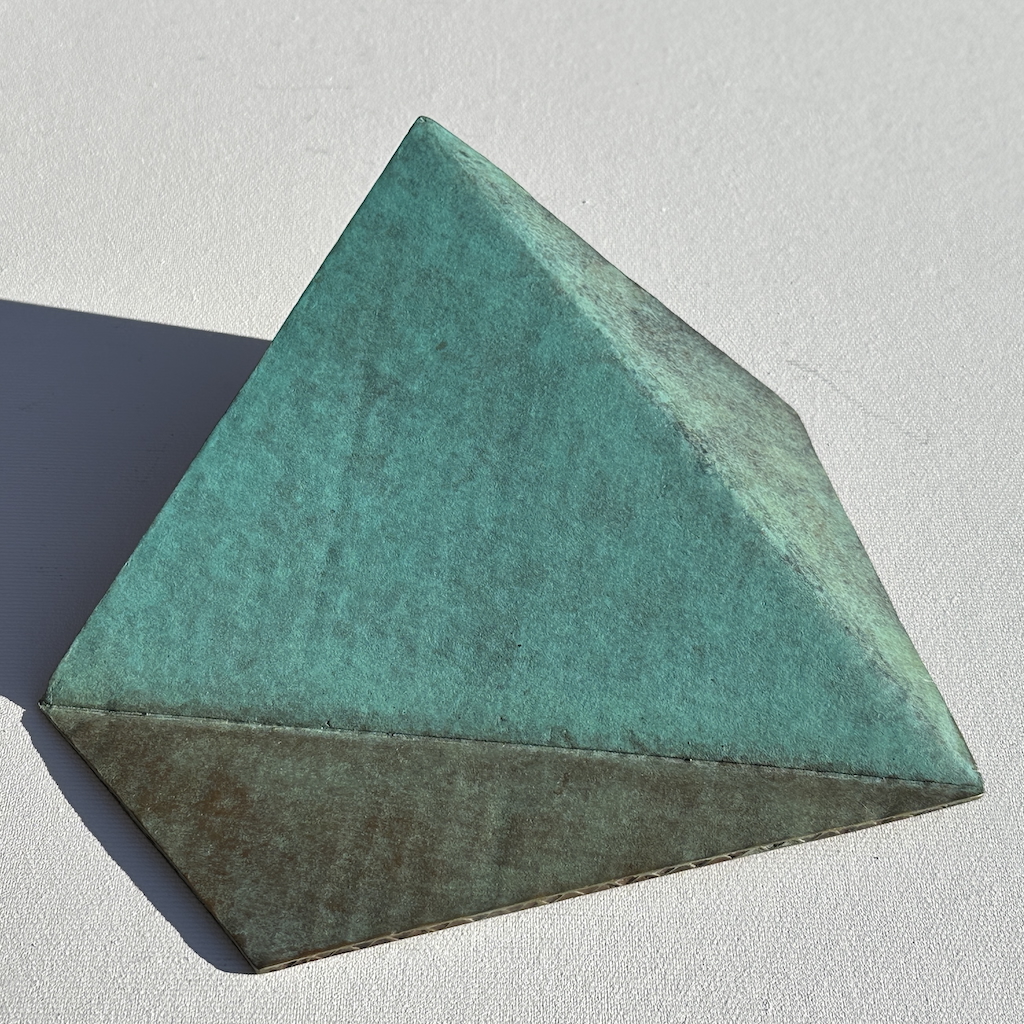Raymond Carter
Folded
August 8th – 30th, 2025
Finding a new use for an everyday common material has always interested me. The leap between the mundane or practical use, to that bewildering transformation into something meaningful, possibly even profound, was brilliantly defined in the early collages by Picasso, where newspaper, rope, fabric and discarded detritus revealed a material reality within his constructed imagery.
I make no such claim for my own recent work. Having moved away from the commercial and domestic materials I was using to construct my ‘paintings’ for over a decade, I rediscovered the wonders of paint and canvas, and new aesthetic and technical challenges. And yet… imagery and ideas which had been percolating for some time as an abstract artist made me susceptible to revisiting an ordinary material again – corrugated cardboard. Not a giant leap for art or mankind, but a small step into a field in which I was initially trained but had long avoided – sculpture.
This Folded Irregular Polygon series, developed from my recent polygonal-shaped paintings based on “Flatland”, the 2-dimensional world imagined by Edwin Abbott Abbott. He satirised 19th century society while exploring complex mathematical ideas about the reality of alternative dimensions. When society depended on conformity, the Irregular Polygons challenged social propriety.
The simple task of folding the shaped cardboard and the historically ancient and complex art of bronze casting at first seemed irreconcilable. Working in series and using specific restricted processes have been part of my practice, now I sought professional assistance to bring these pieces into existence. With the brilliant advice and skill of the team at Perrin Sculpture Foundry, the six Folded Irregular Polygons were born in bronze and coloured with beautiful geometric patinas.
Casting common corrugated cardboard into the material of the prehistoric Harappan, the Chinese, the ancient classical and the extraordinary Benin sculptors; of Donatello, Rodin, Degas, Giacometti, and the thousands of local “heroic” statues, my work basks in reflected glory.

